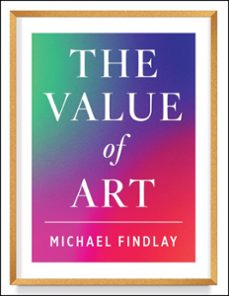Imprescindibles
Más vendidos Libros más leídos eBooks más leídos Todos los libros Todos los libros Autores destacados Series y sagas
Recomendados Libros recomendados Autores destacados Libros que inspiran Vidas con historia LGTBIQ+ English books
Ficción
Literatura Contemporánea Estudios literarios Clásicos Cuentos Poesía Teatro Libros de bolsillo Sagas literarias
Géneros literarios Novela romántica y erótica Novela negra Novela histórica Narrativa fantástica Novela de ciencia ficción Novela de terror Narrativa de humor Narrativa de viajes
No Ficción
Ciencias y tecnología Biología Ciencias Ciencias naturales Divulgación científica Informática Ingeniería Matemáticas Medicina Salud y dietas Formación Idiomas Estilo de vida Libros de Cocina Guías de viaje Narrativa de viajes Deportes Libros de Juegos Manualidades
Humanidades Autoayuda y espiritualidad Ciencias humanas Derecho Economía y Empresa Psicología y Pedagogía Filosofía Sociología Filología Biblioteconomía Estudios filológicos Estudios lingüísticos Estudios literarios Historia y crítica de la Literatura
Infantil
Juvenil
#Jóvenes lectores Narrativa juvenil Clásicos adaptados Libros Wattpad Libros Booktok Libros de influencers Libros de Youtubers Libros Spicy Juveniles Libros LGTBIQ+ Temas sociales Libros ciencia ficción Libros de acción y aventura Cómic y Manga Juvenil Cómic Juvenil Manga Shonen Manga Shojo Autores destacados Jennifer L. Armentrout Eloy Moreno Nerea Llanes Hannah Nicole Maehrer
Libros de fantasía Cozy Fantasy Dark academia Hadas y Fae Romantasy Royal Fantasy Urban Fantasy Vampiros y hombres lobo Otros Misterio y terror Cozy mistery Policiaca Spooky Terror Thriller y suspense Otros
Libros románticos y de amor Dark Romance Clean Romance Cowboy Romance Mafia y amor Romance dramatico Romance dramatico Romcom Sport Romance Otros Clichés Enemies to Lovers Friends to Lovers Hermanastros Slow Burn Fake Dating Triángulo amoroso
Cómic y Manga
Novela gráfica Novela gráfica americana Novela gráfica europea Novela gráfica de otros países Personajes, series y sagas Series y sagas Star Wars Superhéroes Cómics DC Cómics Marvel Cómics otros superhéroes Cómics Valiant
eBooks
Literatura Contemporánea Narrativa fantástica Novela de ciencia ficción Novela de terror Novela histórica Novela negra Novela romántica y erótica Juvenil Más de 13 años Más de 15 años Infantil eBooks infantiles
Humanidades Autoayuda y espiritualidad Ciencias humanas Economía y Empresa Psicología y Pedagogía Filosofía Historia Historia de España Historia Universal Arte Cine Música Historia del arte
Ciencia y tecnología Ciencias naturales Divulgación científica Medicina Salud y dietas Filología Estudios lingüísticos Estudios literarios Historia y crítica de la Literatura Estilo de vida Cocina Guías de viaje Ocio y deportes
Michael Findlay
Recibe novedades de MICHAEL FINDLAY directamente en tu email
Filtros
Del 1 al 3 de 3
POLIGRAFA 9788434313217
Pese a que el mundo del Arte y el Derecho tradicionalmente se nos han presentado como ámbitos alejados el uno el otro, lo cierto es que hoy el sistema jurídico condiciona como nunca la creación artística, su difusion, conservacion y comercializacion. La conocida aversion y desinteres de los artistas y demas operadores del mercado del arte por el derecho choca en nuestros dias con una realidad aplastante: la normativa juridica en los paises occidentales ha crecido tanto, como consecuencia de lo que ya en 1977 el profesor de Yale Grant Gilmore califico como "orgia de creacion de leyes", que hoy no es posible obviarla por nadie, ni tampoco por los protagonistas del mundo del arte. No es posible, pero tampoco es inteligente, pues en la medida en que el arte ha cobrado una mayor importancia economica en nuestra sociedad, son muy numerosos los ataques que en sus derechos e intereses culturales y economicos sufren los artistas, los museos, las instituciones culturales, los coleccionistas, los Estados y la sociedad en general. Consecuentemente con esta nueva realidad, la coleccion "Arte, Mercado y Derecho" de la Fundacio Gala-Salvador Dali se creo en el año 2011 con la voluntad de promover un conocimiento sobre temas legales y economicos que pueda ser util a todos los estamentos e instituciones mencionados, y que contribuya la proteccion, conservacion, divulgacion y prestigio del patrimonio artistico de todos los ciudadanos.
Ver más
Tapa blanda
PRESTEL-VERLAG 9783641301118
On the tenth anniversary of its publication, this updated edition of a work ARTNews hailed as "one of the best books ever published on the art world" features new material on the latest art deals, reflections on race and culture, the impact of the pandemic on the art world, and more. Internationally renowned dealer and market expert Michael Findlay offers a lively and authoritative look at the financial and emotional value of art throughout history. In this newly revised, updated, and generously illustrated edition Findlay draws on a half-century in the business and a passion for great art to question and redefine what we mean by "value," addressing developments in this conversation since the book was first published in 2012: the rise of NFTs and digital art; the auction house as theatre; the pressing relationship between art and societys fraught political landscape; and the impact of the pandemic. With style and wry wit, Findlay demystifies how art is bought and sold while also constantly looking beyond sales figures to emphasize the primacy of arts essential, noncommercial worth. Coloring his account with wise advice, insider anecdotes involving scoundrels and scams, stories of celebrity collectors, and remarkable discoveries, Findlay has distilled a lifetimes experience in this indispensable guide, now updated for todays sophisticated and discerning audience.
Ver más
eBook
Prestel 9783641225162
When it comes to viewing art, living in the information age is not necessarily a benefit. So argues Michael Findlay in this book that encourages a new way of looking at art. Much of this thinking involves stripping away what we have been taught and instead trusting our own instincts, opinions, and reactions. Including reproductions of works by Mark Rothko, Paul Klee, Joan Miro, Jacob Lawrence, and other modern and contemporary masters, this book takes readers on a journey through modern art. Chapters such as "What Is a Work of Art?", "Can We Look and See at the Same Time?", and "Real Connoisseurs Are Not Snobs," not only give readers the confidence to form their own opinions, but also encourages them to make connections that spark curiosity, intellect, and imagination. "The most important thing for us to grasp," writes Findlay, "is that the essence of a great work of art is inert until it is seen. Our engagement with the work of art liberates its essence." After reading this book, even the most intimidated art viewer will enter a museum or gallery feeling more confident and leave it feeling enriched and inspired.
Ver más
eBook
Del 1 al 3 de 3



























